China Hardware Innovation Camp is a 10-month program running since 2016 across Switzerland to realize a viable business idea of a connected device. The interdisciplinary team (business, design, and engineering) completes the research and the initial prototypes in Switzerland and then manufactures the production-ready prototype on the ground in Shenzhen, China. Each individual has to pass an application process to receive a spot on a team.
The project of ShuQi was part of the China Hardware Innovation Camp at HEAD–Genève, in collaboration with the École Polytechnique Fédérale de Lausanne.
Team: Axel Collet (HEPIA), Tabea Estermann (HEG), Loïc Fankhauser (HEAD), Julia Racsko (HEAD), Adrien Taboada Cid (HEPIA)
Our selected problem
Project goal
Nowadays we are always packing and unpacking bags for the office, the gym or the airport. How might we make daily packing less of a hassle to spend less time and energy on our objects?
Nowadays we are always packing and unpacking bags for the offiice, the gym or the airport. How might we make daily packing less of a hassle to spend less time and energy on our objects?
After defining the problem our team wanted to work on, we have set out to conduct needfinding interviews. The findings were grouped together into 3 personas based on the different motivations we have uncovered.
Research
Project goal
After defining the problem our team wanted to work on, we have set out to conduct interviews about current packing routines, people’s relationships with their bags and the objects they carry in them. These interviews were conducted by Tabea, who brought the business skills to the group, and myself. Then as the whole team, we grouped all of our findings initially into 3 personas (and 3 value proposition canvases) based on the different motivations we have uncovered.
We also summarized our findings in a user journey map to define the possible touchpoints for our future product: a device that lives in your bag, checks what you already have there, and reminds you of the things you still need.
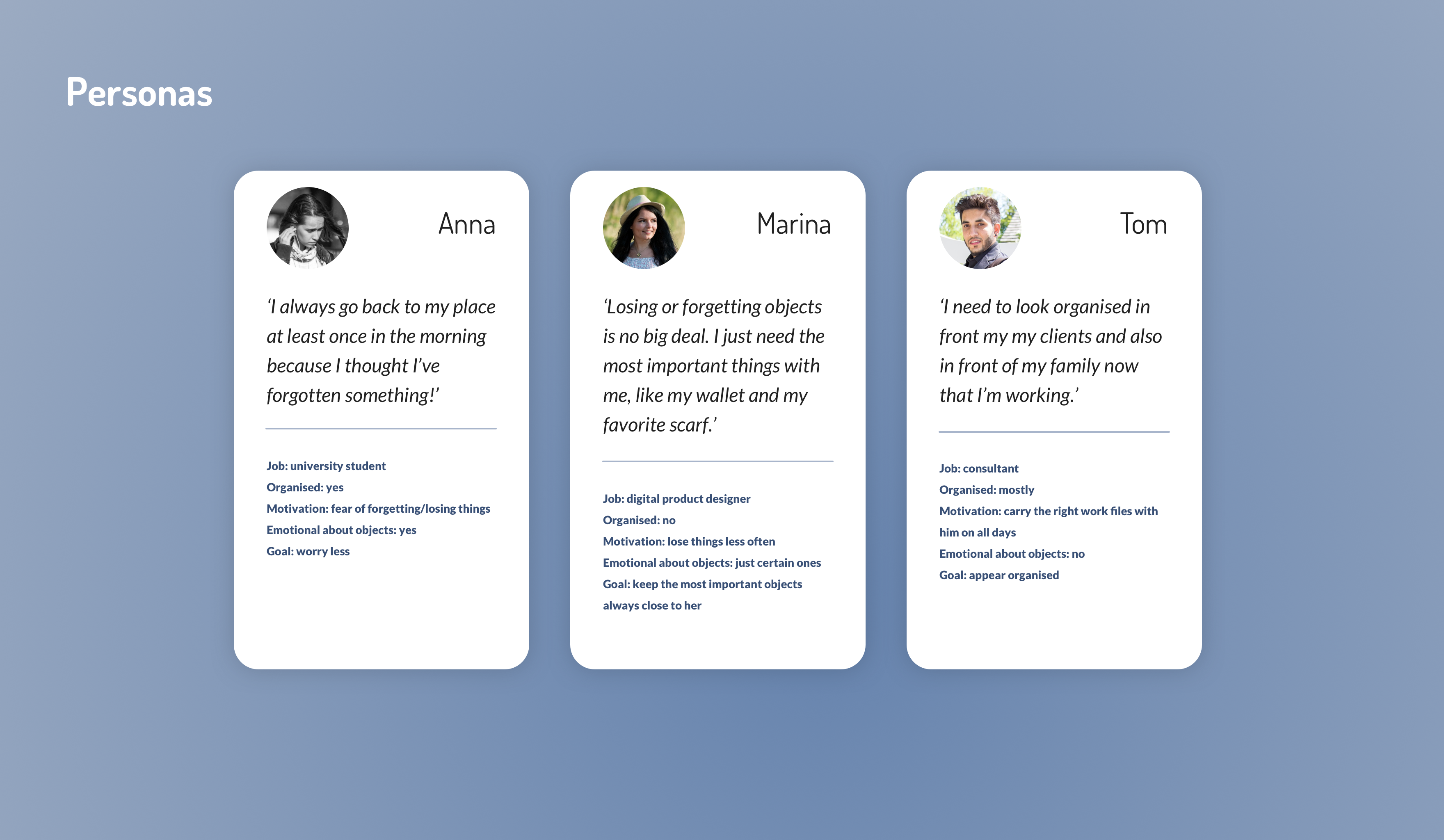
The personas validated our initial problem statement: daily packing is a returning pain point, and mistakes can have uncomfortable consequences. However, we also invalidated our assumption that people can set up a system for the week: our working adult lives are much more complicated. While there are routines, repeating activities and places, the more common use case is to improvise on a daily basis and plan for one or two days in advance if they are not travelling.
Based on this finding, we decided not to connect object lists to the calendar. A list can refer to a place, like the office or the gym, or can be attached to a certain day, and can be made from adding scanned objects. This was also when we settled on the razorblade business model.
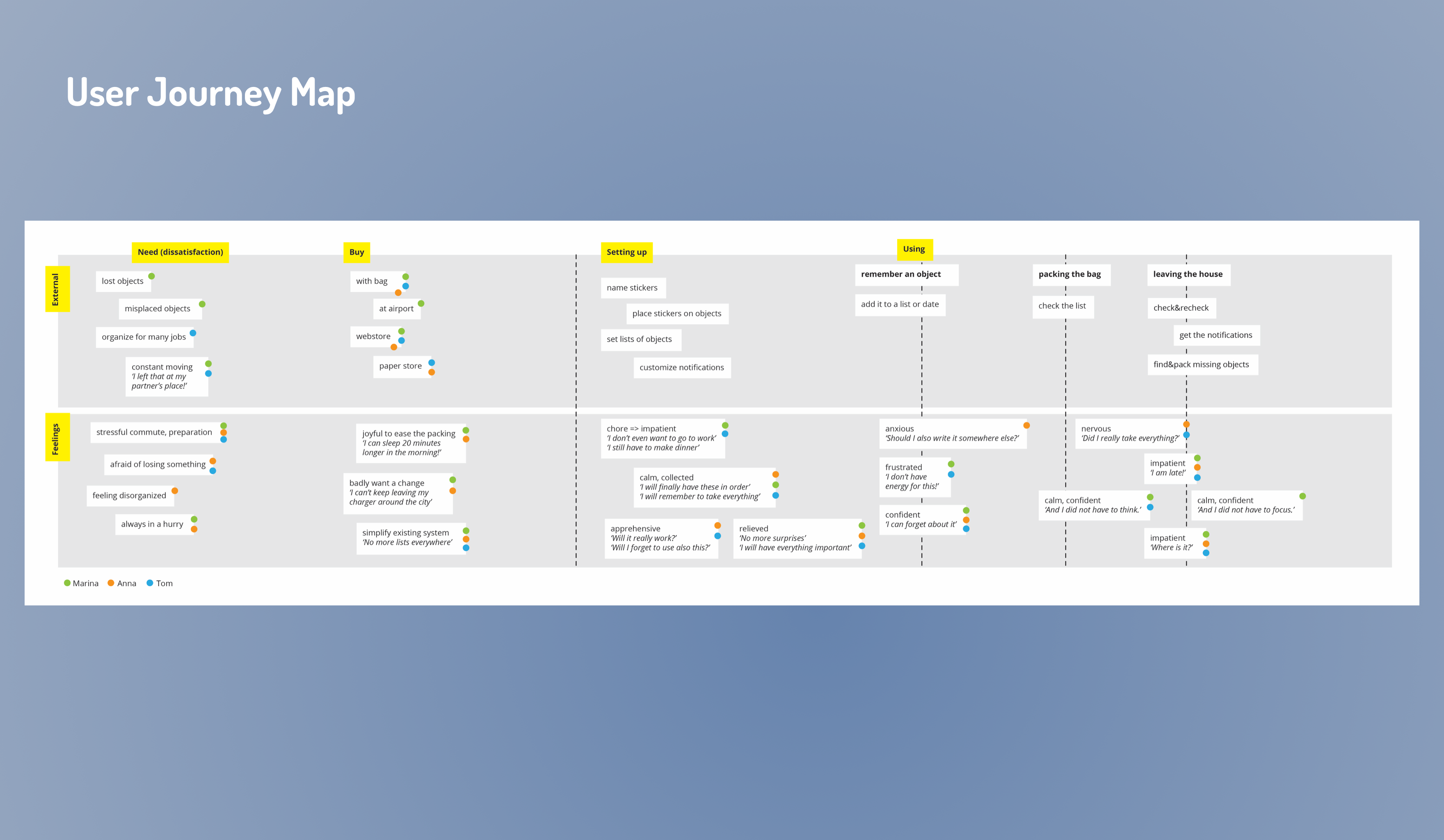
In March, our engineers were busy making the prototype: connecting the RFID stickers, the device’s Bluetooth communication to an Android app, while also creating a PCB for all the necessary components. At the same time, us designers turned to the brand design and the story of our pitch.
While looking for a good symbol or metaphor, we found Clark’s nutcracker, a bird that remembers the exact location of seeds that it has hidden during the summer, even if these seeds are now covered with a meter of snow.
ShuQi was born.
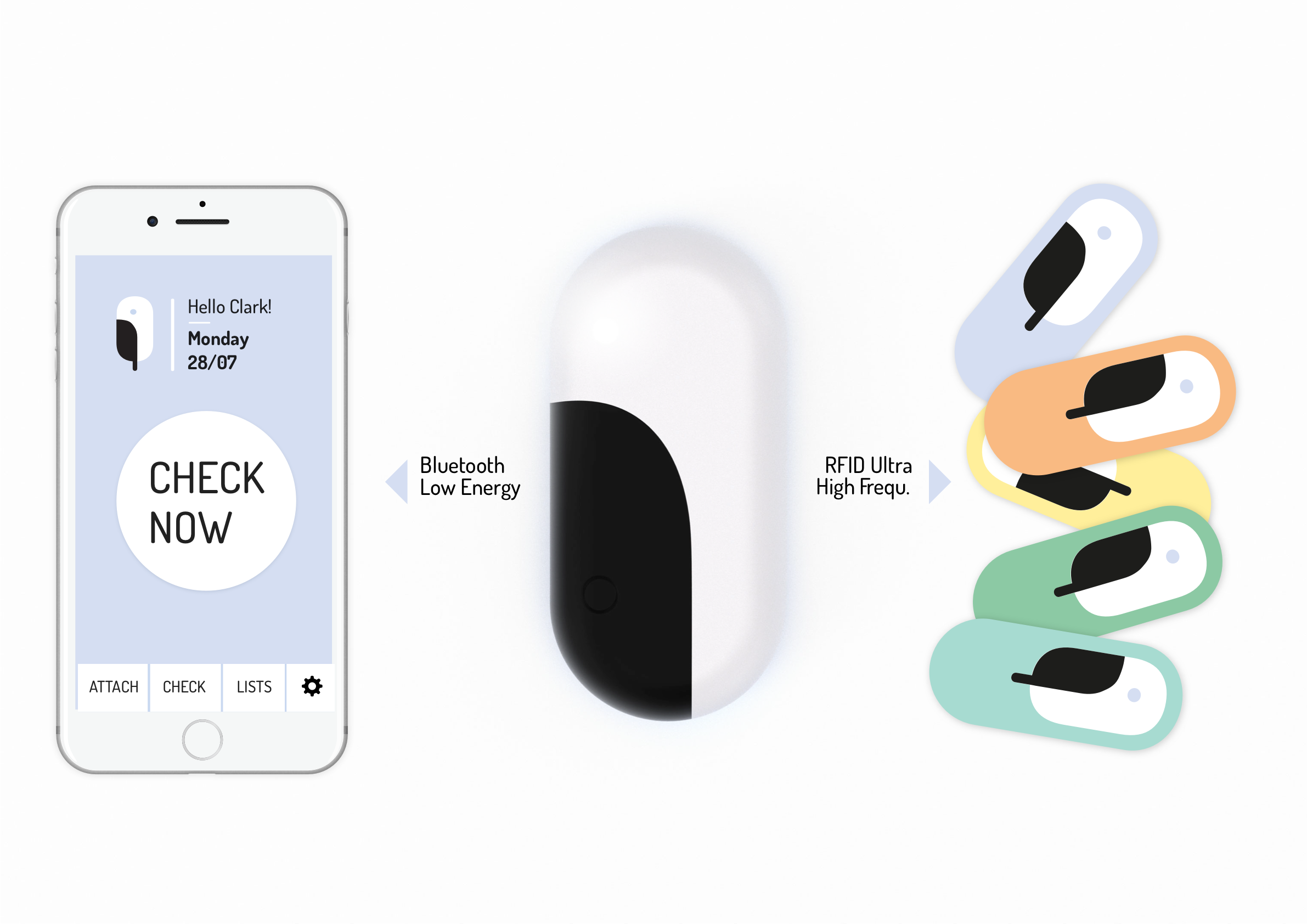
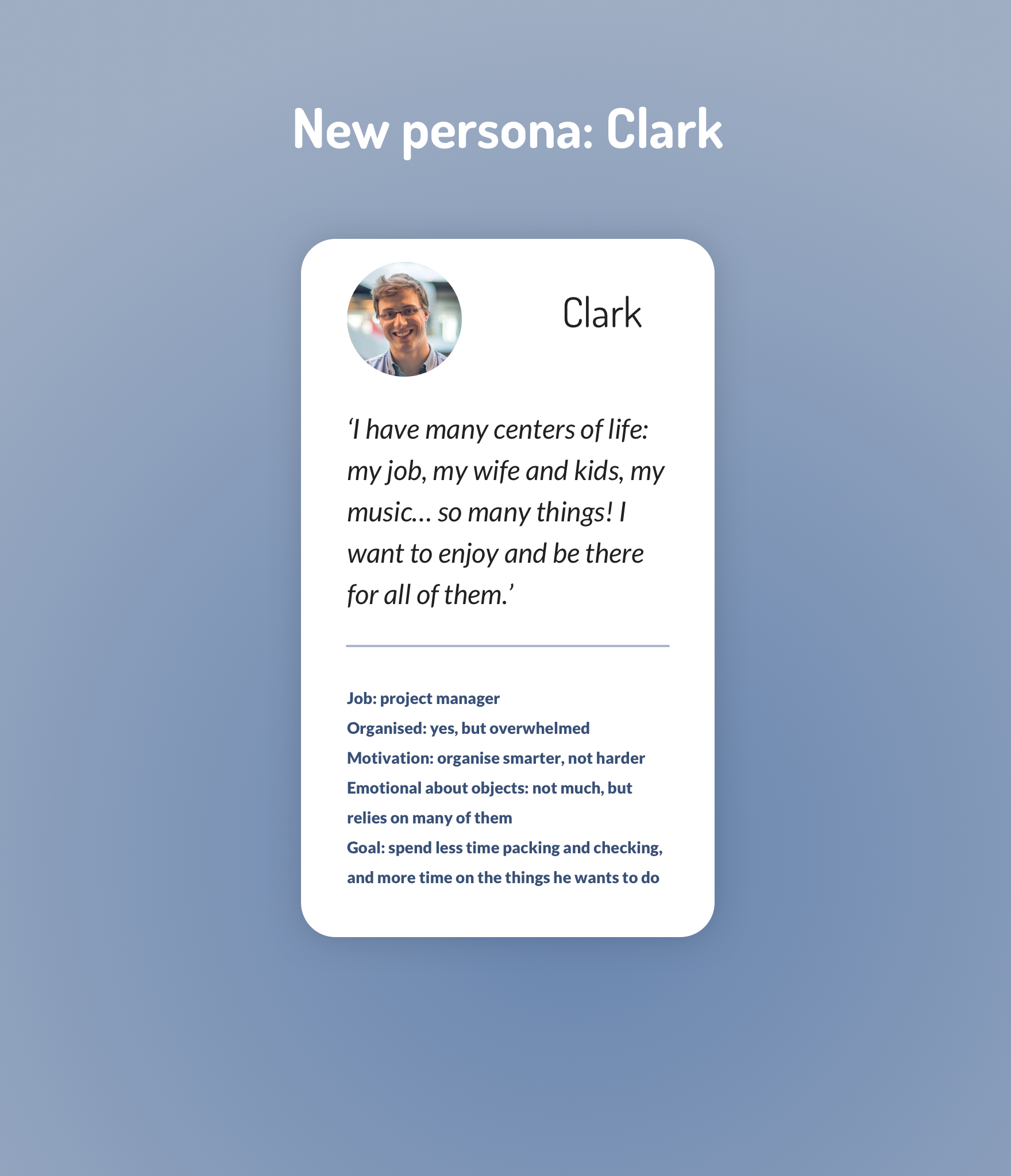
Our solution
ShuQi emerged alongside with the last persona, Clark, who was assembled from existing and some new interviews. Clark, just like the little nutcracker, also needs to remember many things, since he has different centres of life: an interesting and demanding business career, small kids and he is also a musician.
However, unlike his namesake, he cannot even keep 10 things in his head. Last week, he forgot to bring a cable with him on stage. Which is why Clark downloaded ShuQi to better organize his life!
Clark receives ShuQi together with an initial set of 10 RFID stickers that he can put on any of his objects–ShuQi will watch whether these items are surely in the bag. When Clark has used all his 10 initial stickers, he can order a new set through the application.
The functions that Clark needs are lists for all the things that he will need on stage, on a meeting, or on the playground, then either attach such a list to a date in the calendar or just check them whenever needed.
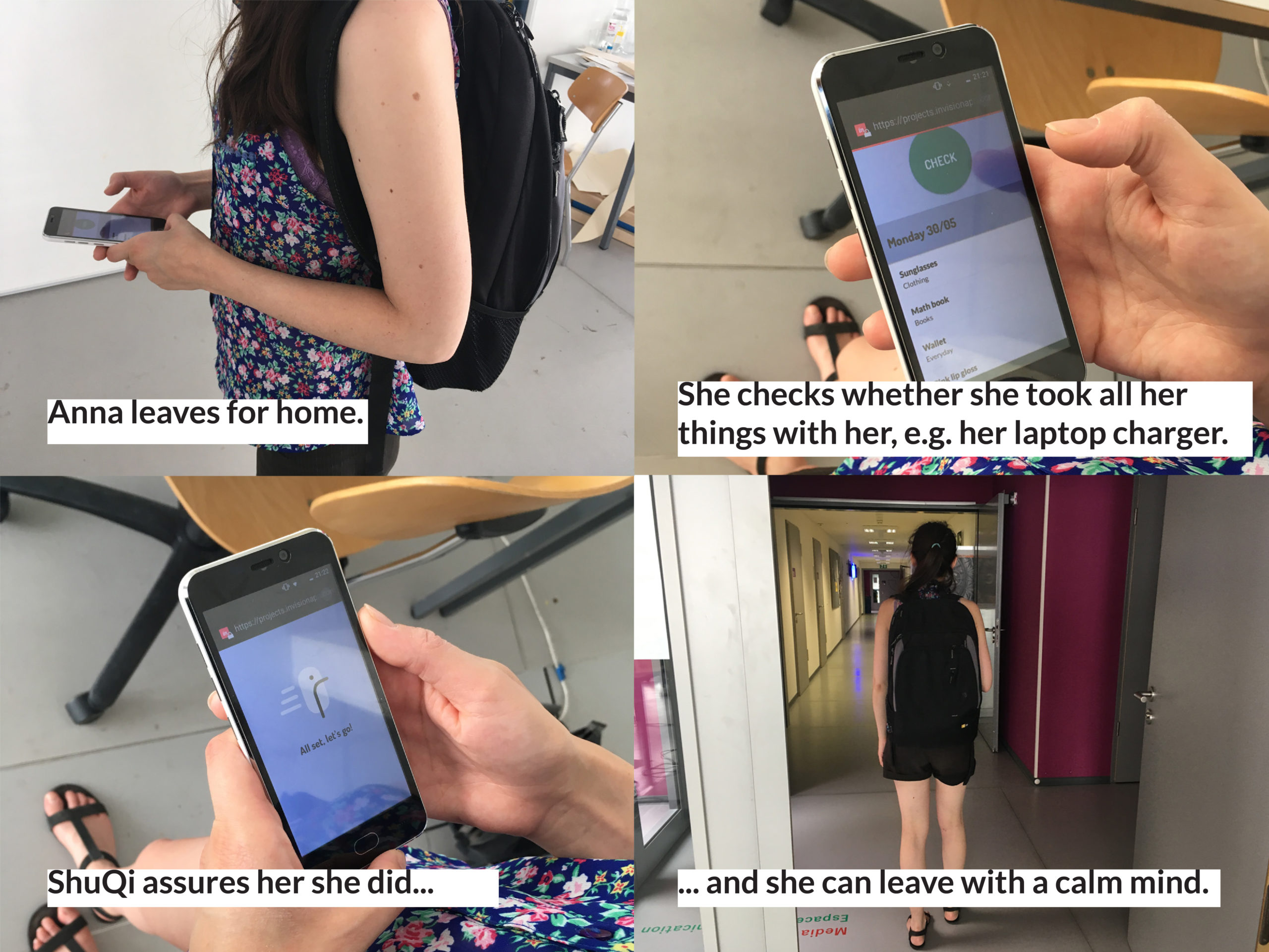
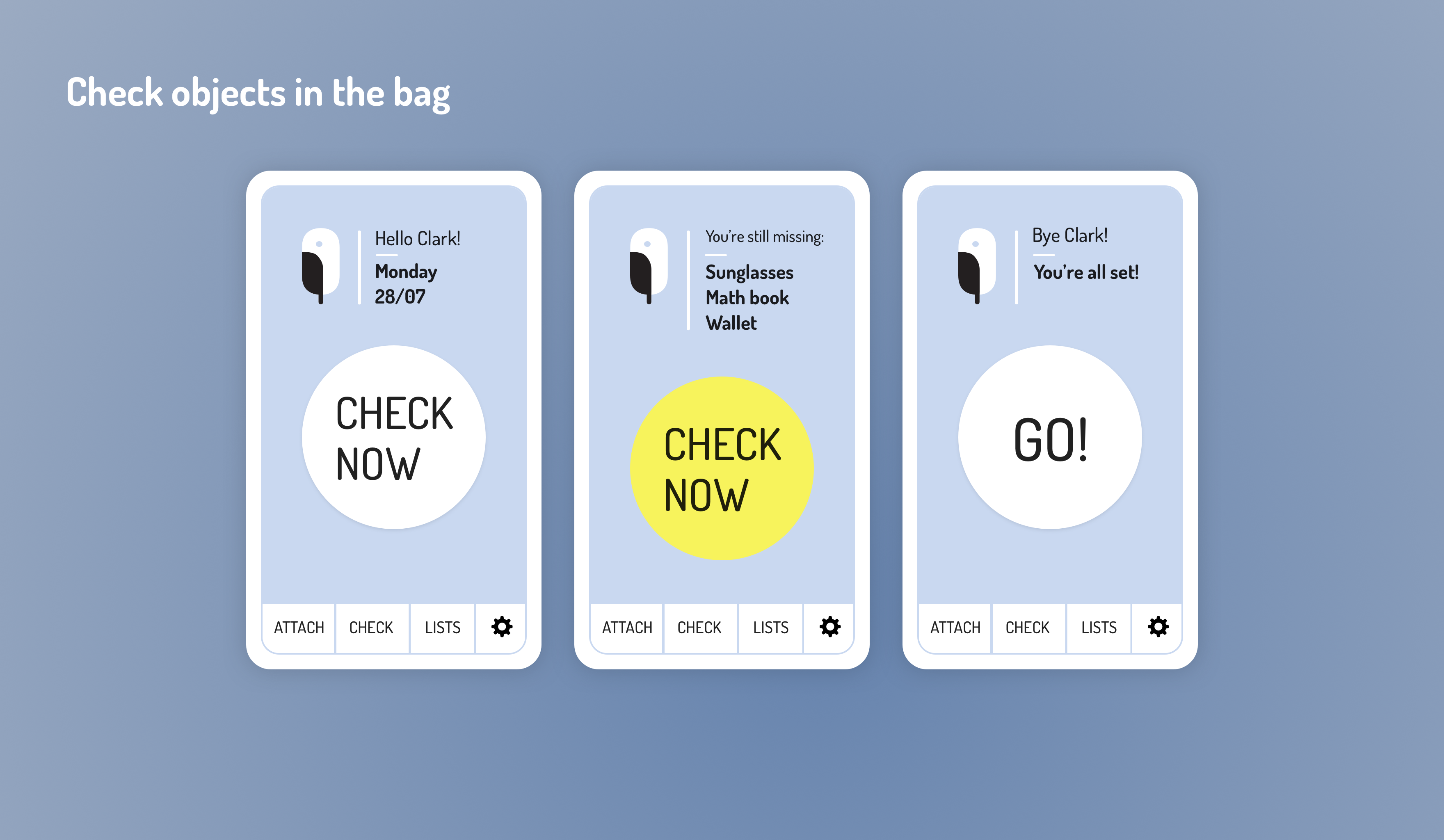
While the setup might seem initially daunting, scanning and naming a sticker is as easy as pairing a speaker to your phone: the stickers contain RFID chips to communicate with the device, and the device uses low-energy Bluetooth to connect to the phone.
While we initially considered putting GPS-tracking into each sticker to find objects wherever they are, the constant charging of each sticker to make it work would be too much friction for our users and the problem they are solving. It would be significantly less reliable, and less energy-efficient.
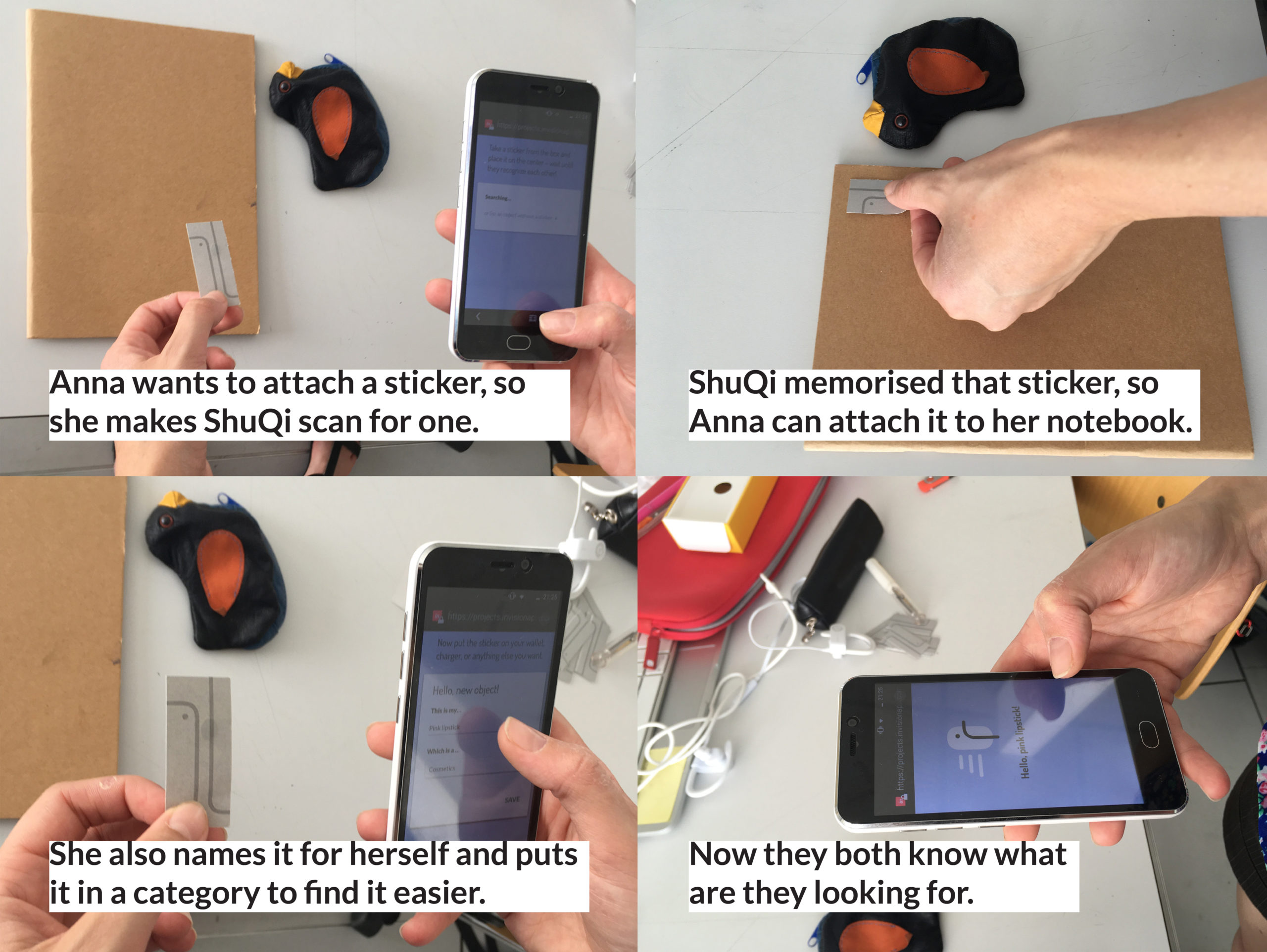
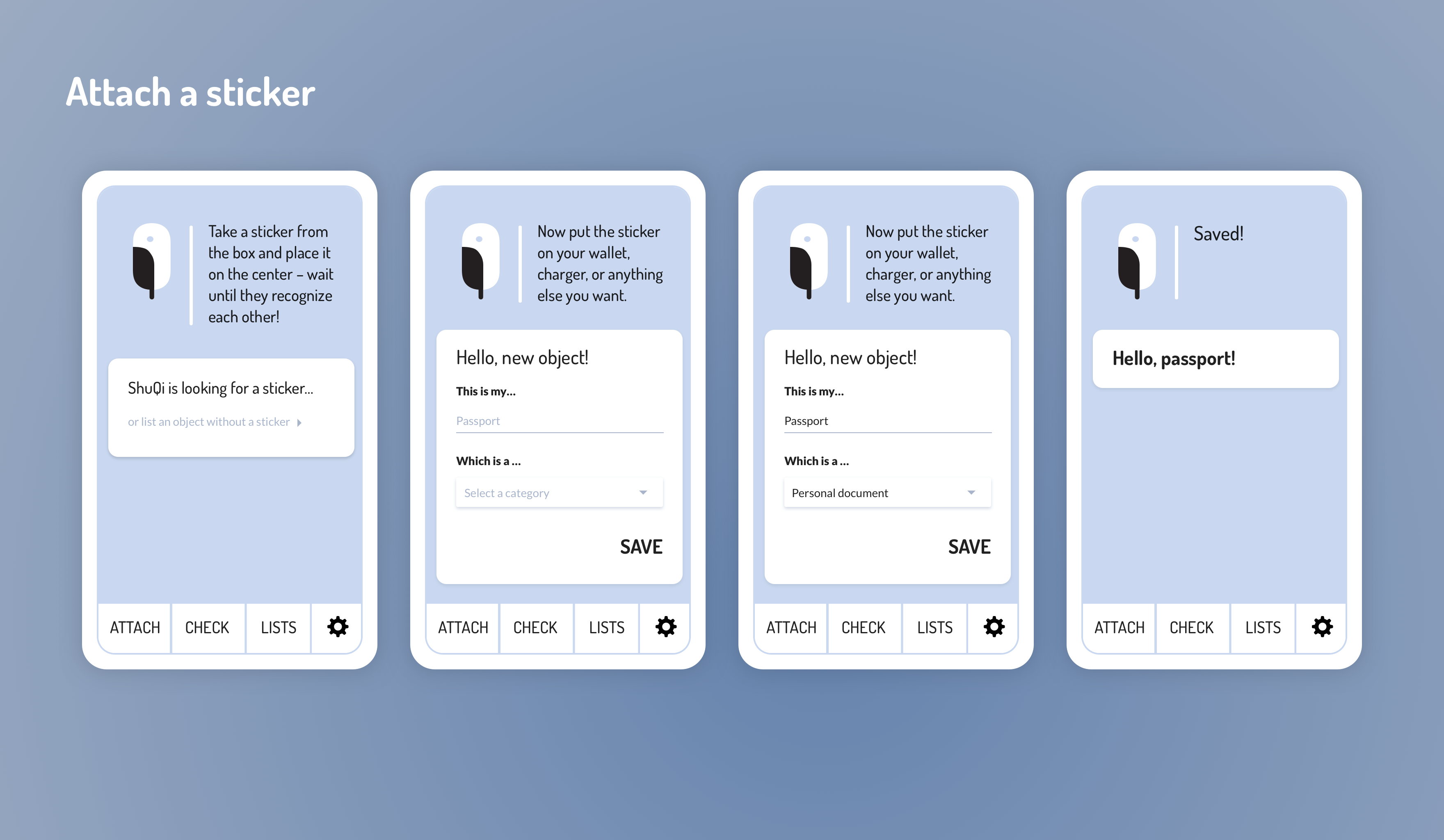
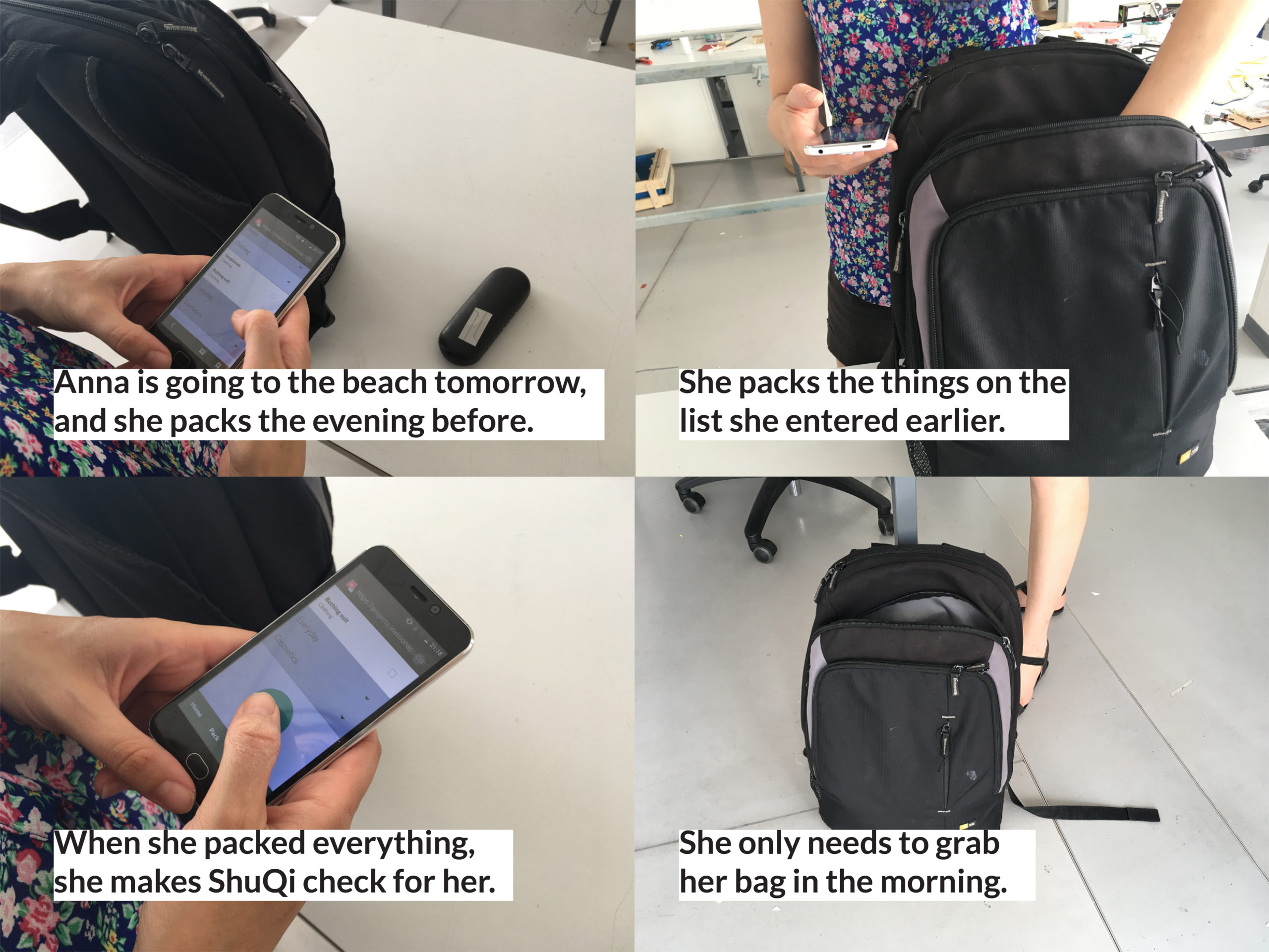
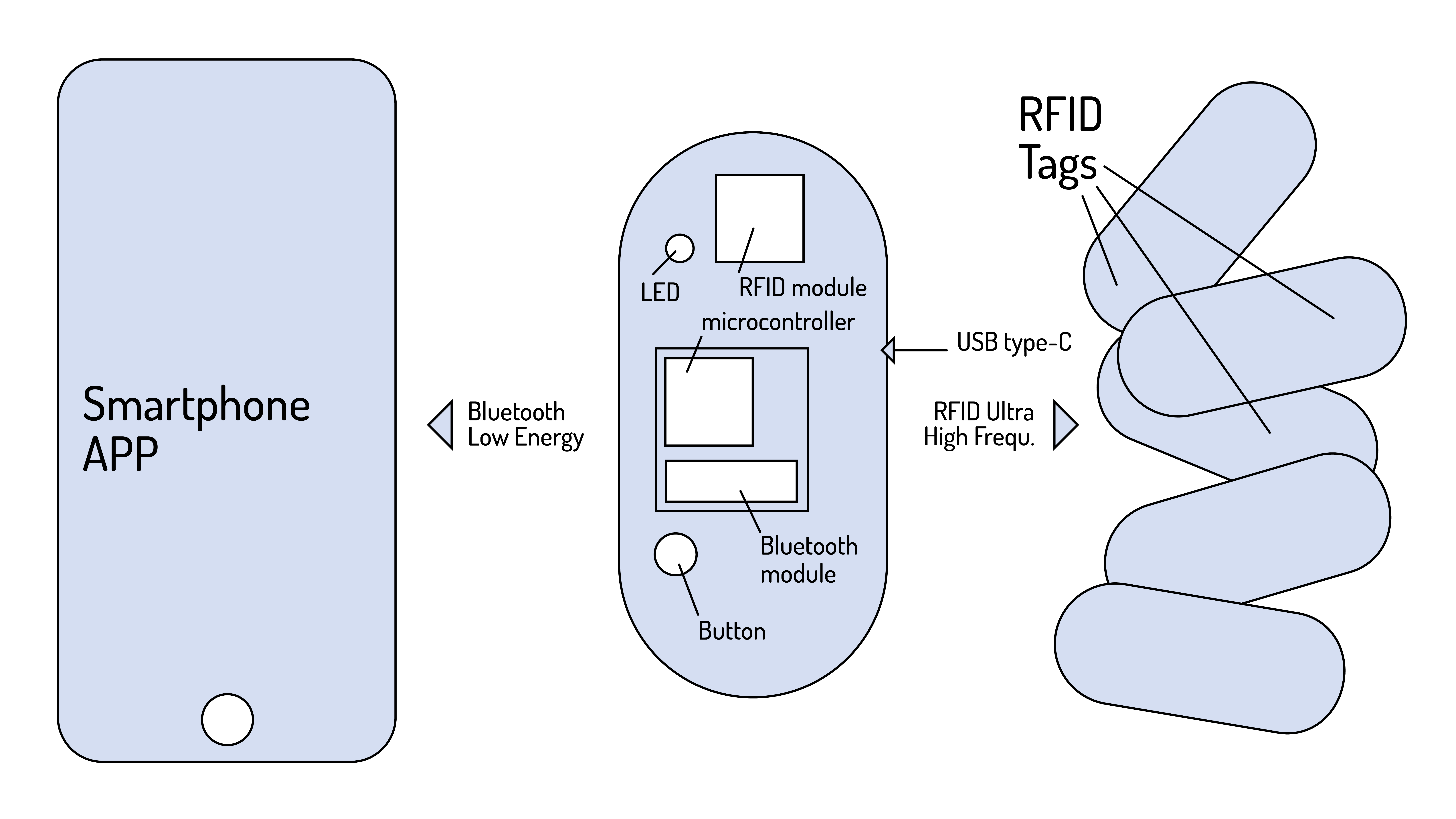
ShuQi is designed after the bird and can find a home in any bag. It can detect all the stickers with UHF RFID technology in a range of 30 centimeters. While it could have been a larger range, most bags don't need more than that, but we needed more distance than what is used for contactless payment options.
Since the RFID stickers have no energy, only the central device needs occasional charging. To extend the battery life, the device sleeps quietly in the bag and only wakes up when it receives an order from the phone via low-energy Bluetooth (BLE). We had no need for continuous data streaming. This way, the battery can hold up to 2 weeks. Charging happens through an USB-C connection.
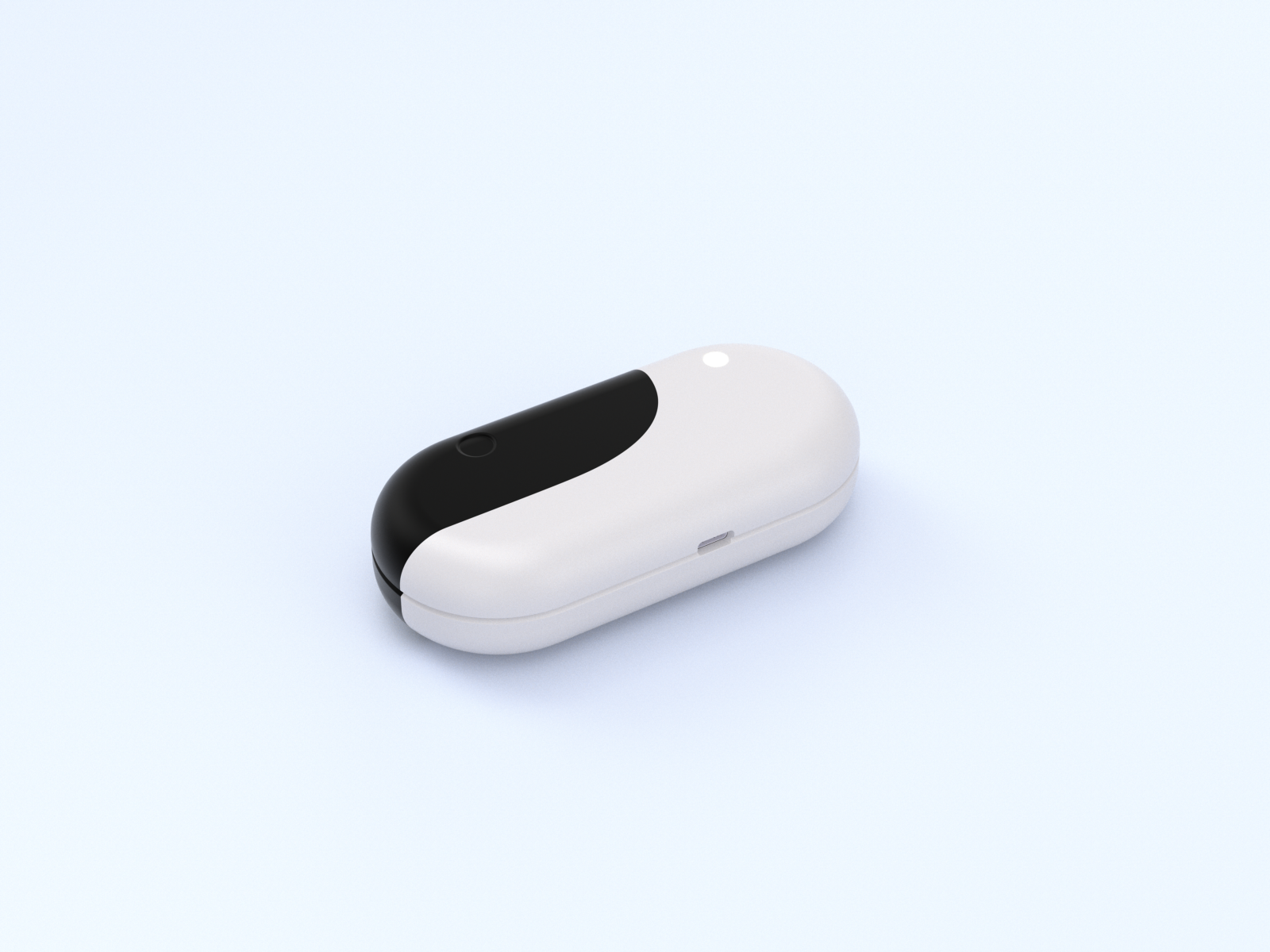

Clark can now can leave his home or offiice with no worries!
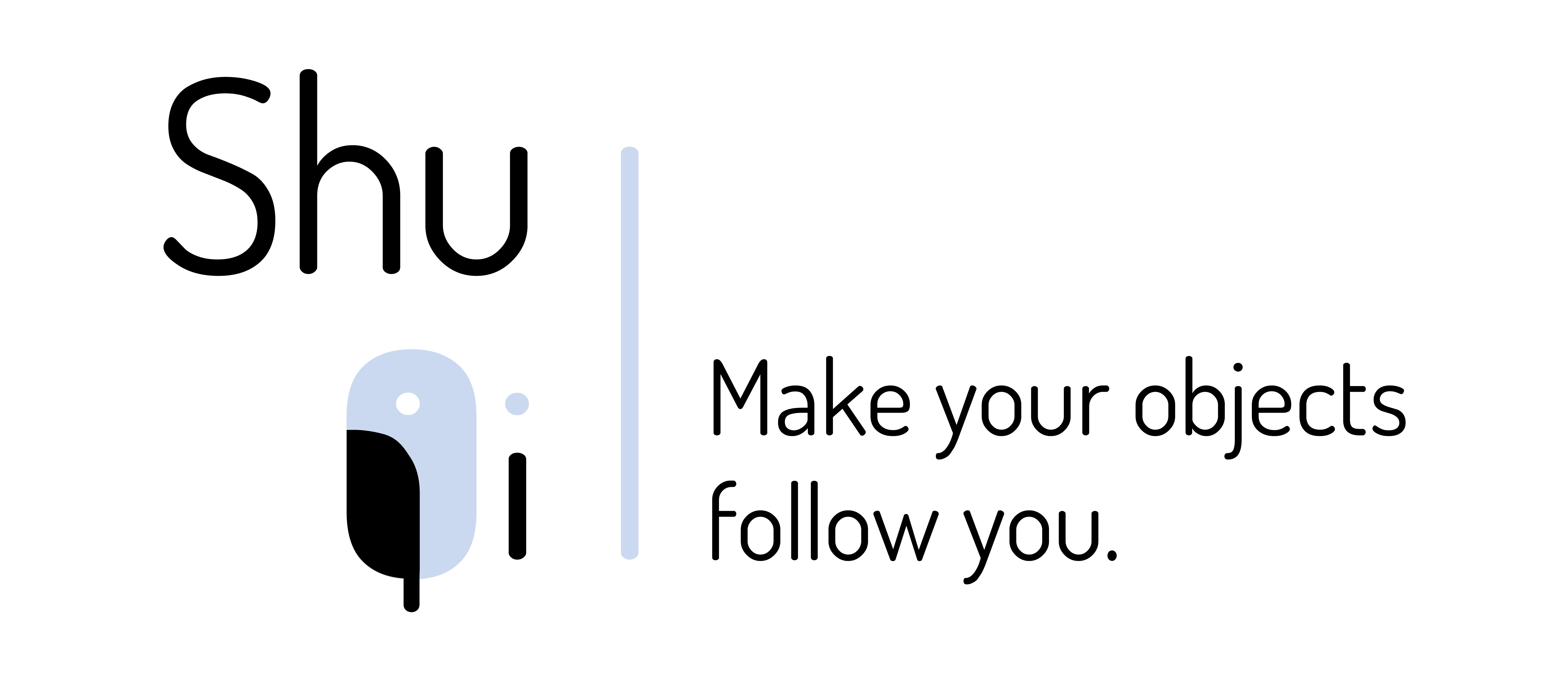
The documentation of our progress in Switzerland was documented in a blog. Here are the links to selected posts:
The first steps // Starting the user research // Product and brand design // An average week for the team
Our journey in Hong Kong and Shenzhen is documented here.
Many thanks to our supervisors and coordinators: René Beuchat, Alexandre Caboussat, Claudio Colucci, Nicolas Montandon, Lysianne Léchot-Hirt, Camille Scherrer and Gordan Savičić.
The documentation of our progress in Switzerland was documented in a blog. Here are the links to selected posts:
The first steps // Starting the user research // Product and brand design // An average week for the team
Our journey in Hong Kong and Shenzhen is documented here.
Many thanks to our supervisors and coordinators: René Beuchat, Alexandre Caboussat, Claudio Colucci, Nicolas Montandon, Lysianne Léchot-Hirt, Camille Scherrer and Gordan Savičić.